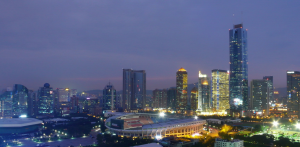Yglesias has a post about the latest Chinese mass development, a megacity along Pearl River which will link many of its urban manufacturing areas with a dizzying array of infrastructure projects. The post also decries the lack of regional planning in the United States, while completely ignoring the land grabs and uprooting of reluctant people necessary to make such sweeping changes. Also: Some Chinese megalopolises, like Ordos, become insta-ghost towns. But here’s the Yglesias screed:
“I would say the key merit of this plan isn’t just the possibility for more coherent regional planning (it might work out well, or the planning might be out of touch and inept) so much as it is the deliberate desire to keep filling in China’s most prosperous, highest-productivity area. And it’s quite reasonable to expect people to continue flowing away from the poor countryside to opportunity in richer areas, and specifically this area which is quite prosperous by Chinese standards. Rich, productive urban areas are, after all, where the best opportunities lie and it’s sensible for the Chinese to be planning for the infrastructure needs of a future in which more people flock to them.
The tragedy is that we’ve largely stopped doing this in the United States. Of course people still flock to the Boston-Washington corridor, the Bay Area, etc. But we don’t adopt the kind of infrastructure and zoning policies that would facilitate those areas becoming substantial denser. Consequently, instead of having the fastest net population growth in the richest metropolitan areas (or states) we have people flocking to Houston and Phoenix in search of cheap housing.”

